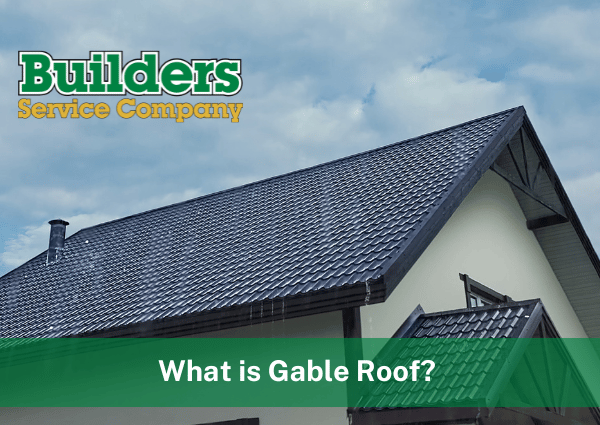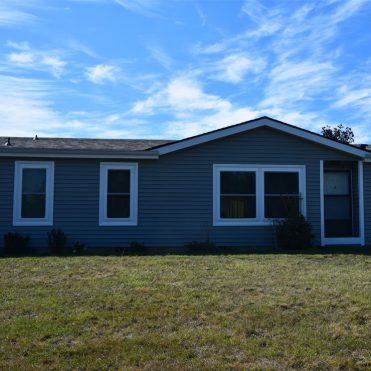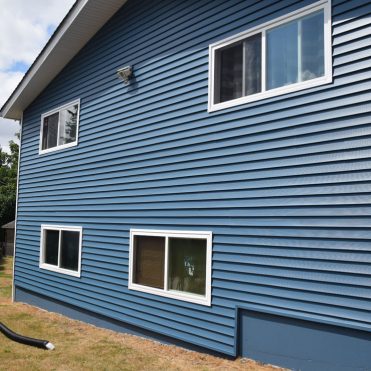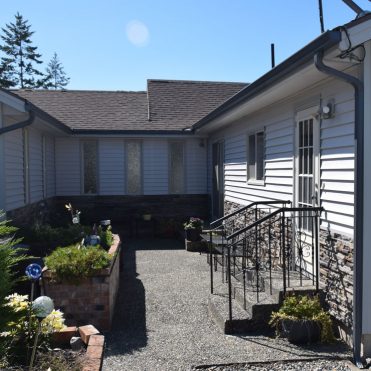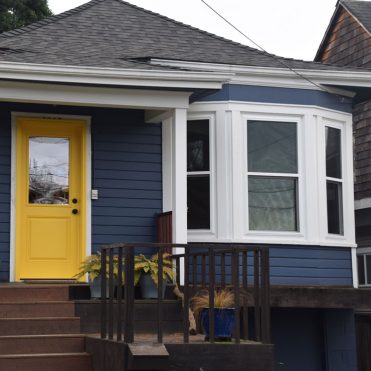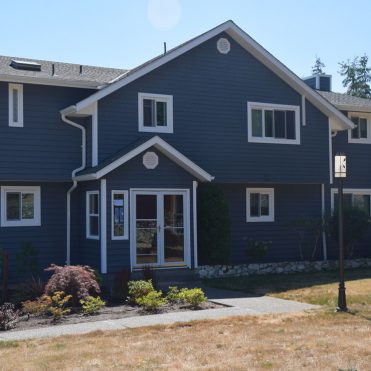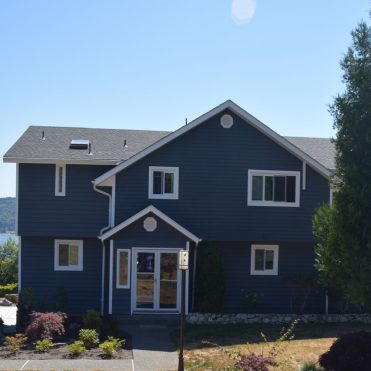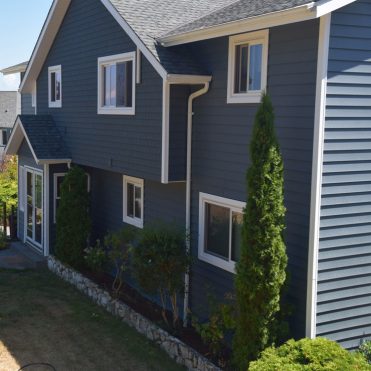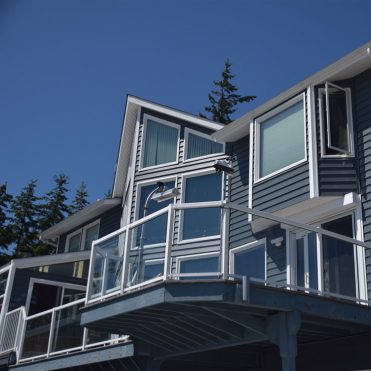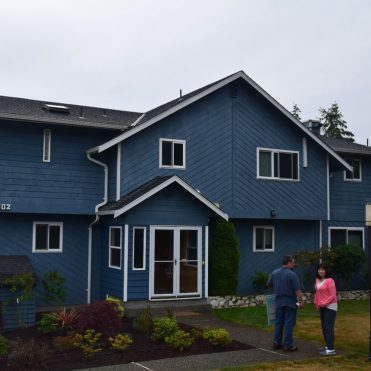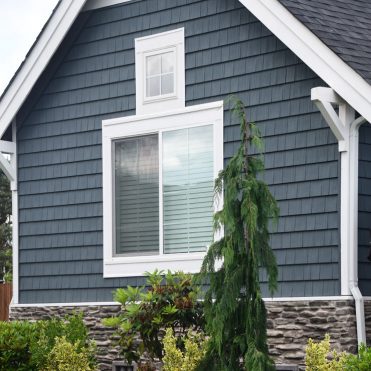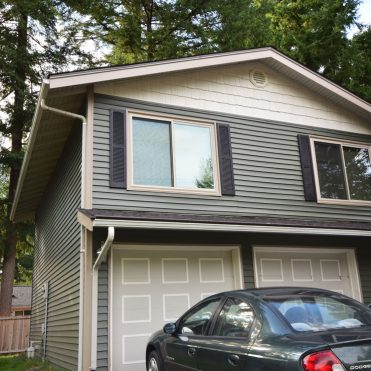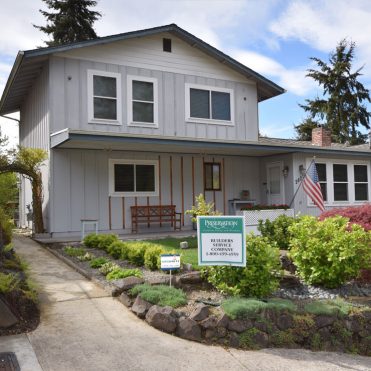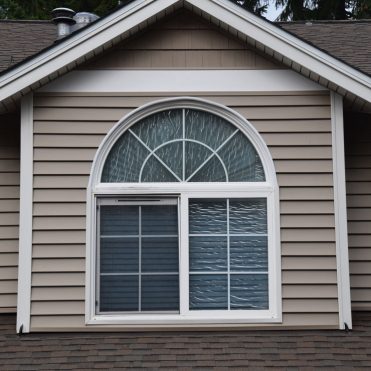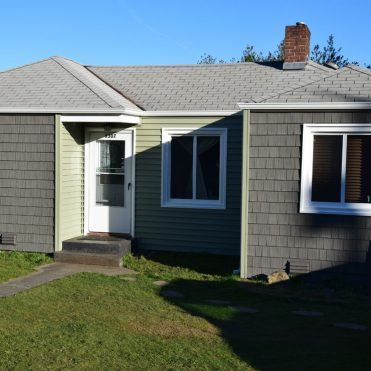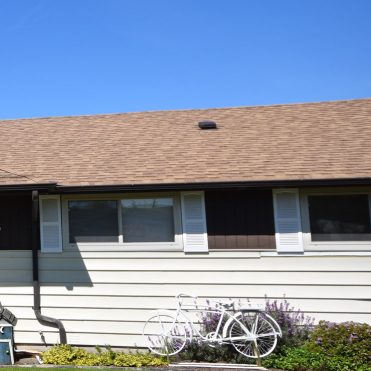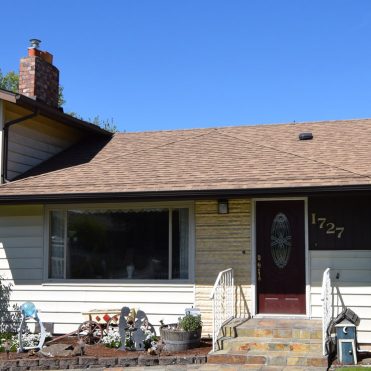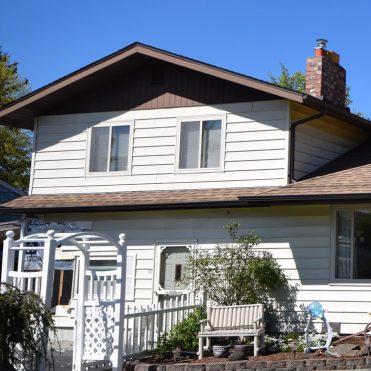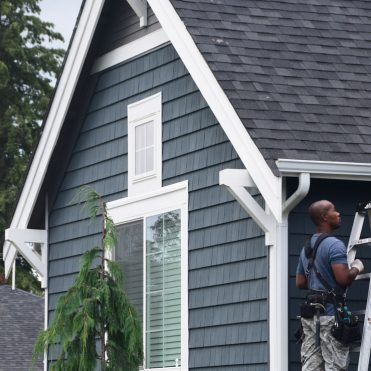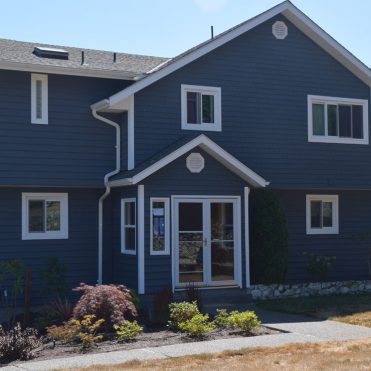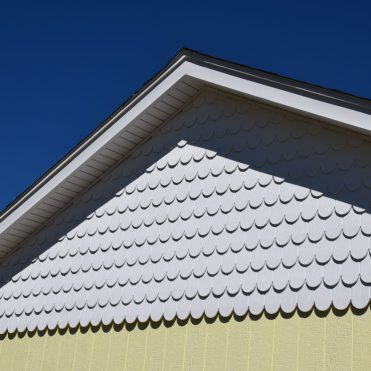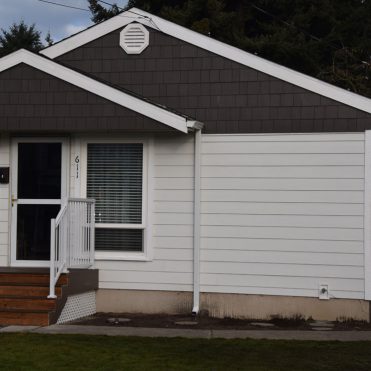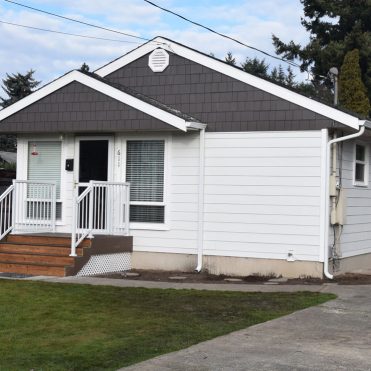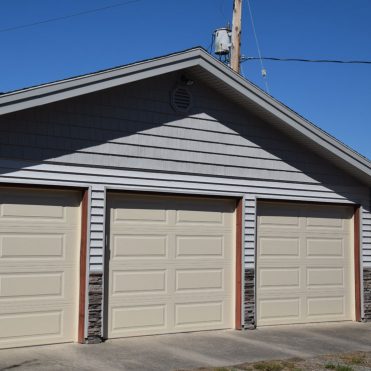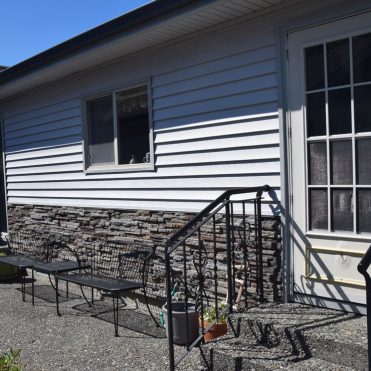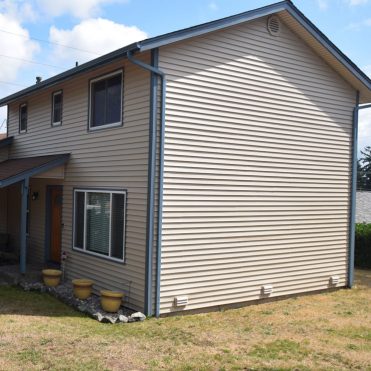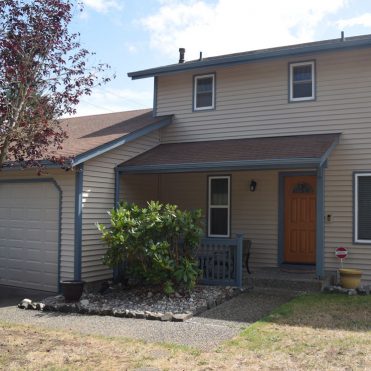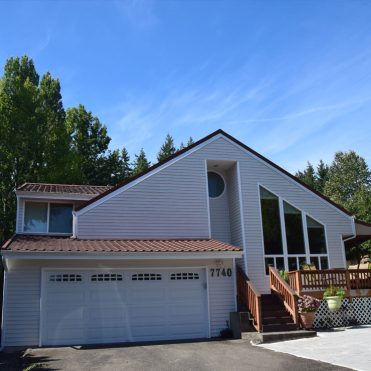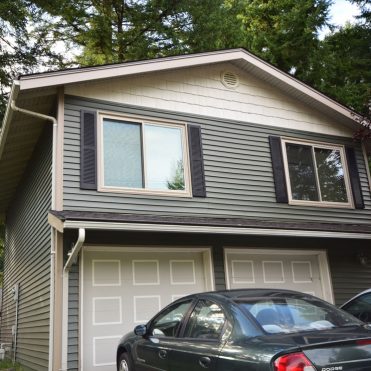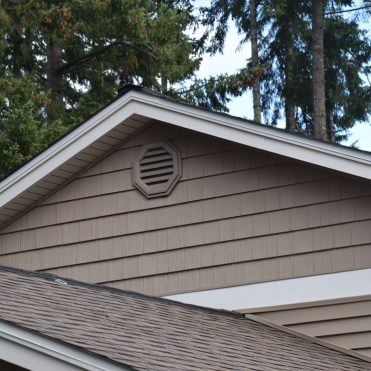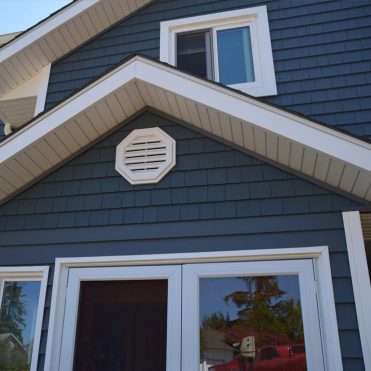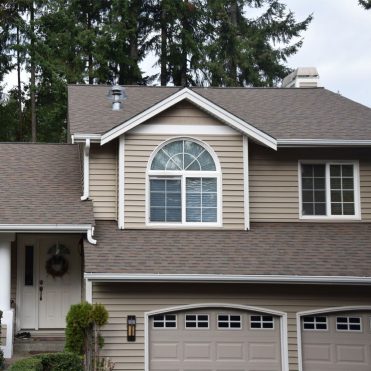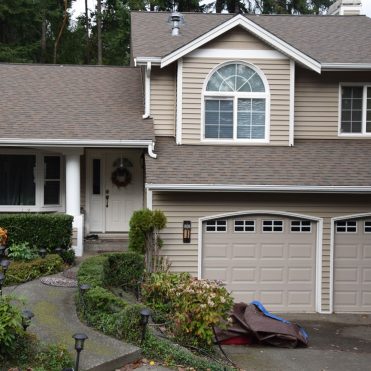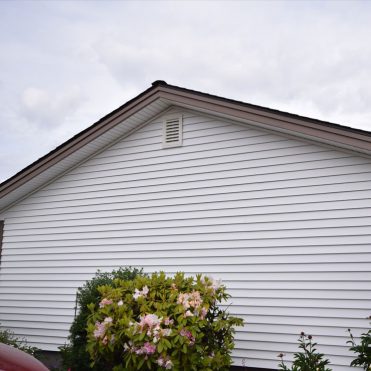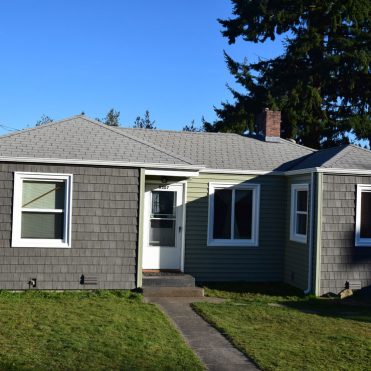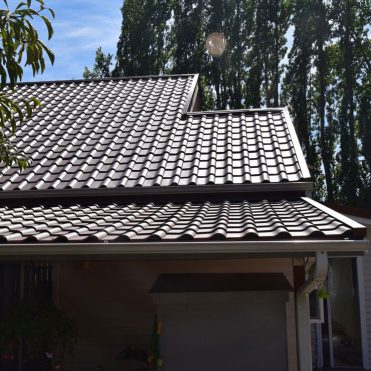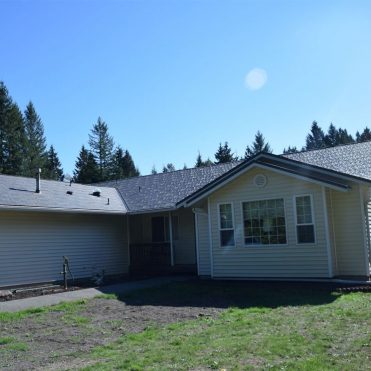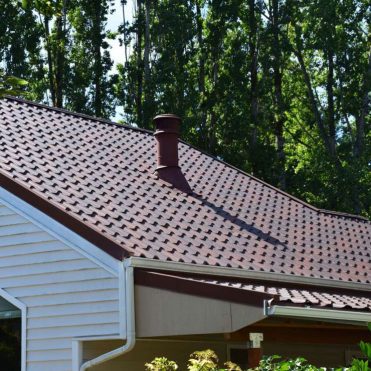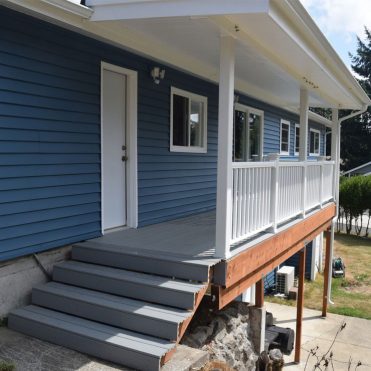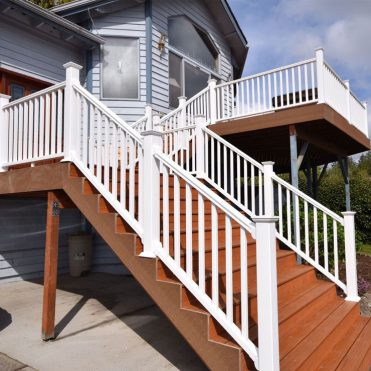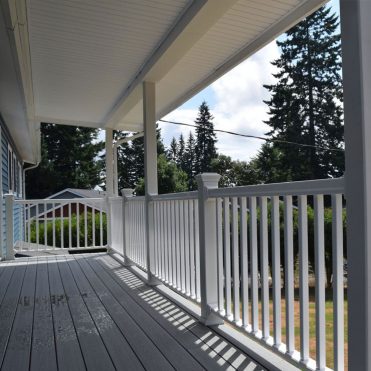What is Gable Roof?
Why Homeowners Should Understand Roof Types
When it comes to choosing the right roof style, knowing the basics can make all the difference. So, what is gable roof design—and why does it matter?
Gable roofs are one of the most recognizable and widely used roof styles in North America. With their classic triangular shape and efficient design, they’re more than just aesthetically pleasing—they’re practical, versatile, and cost-effective.
Understanding what is gable roof can help homeowners make informed decisions during new home construction, roof replacements, or remodeling projects. From structural advantages to curb appeal, the gable roof remains a timeless and functional option for various climates and home styles.
What is a Gable Roof?
A gable roof is a type of sloped or pitched roof where two pitched sections meet at a central ridge, forming a triangular extension at each end of a house. These triangular sections are called gables and are typically covered in siding or masonry rather than roofing materials.
This roof style is highly efficient for shedding water and snow and is a common architectural element in traditional and modern homes alike. Whether used in simple rectangular homes or complex building layouts, gable roofs provide practical and aesthetic advantages that few other roof types can match. Knowing what is gable roof and how it performs can save you time and money in the long run.
Anatomy of a Gable Roof
To understand what is gable roof in structural terms, it helps to break down its primary components:
Basic Structural Components
- Ridge: The highest point of the roof where the two sloping sides meet.
- Slopes/Pitches: The angled sides that direct water away.
- Gable Ends: The triangular vertical walls that close off each end.
- Eaves: The lower edges that extend beyond the walls, offering shade and protection.
Each of these components plays a vital role in supporting the overall function and performance of the roof system.
Types of Gable Roofs
Gable roofs come in many styles, each with specific structural or aesthetic benefits:
Common Gable Roof Styles
- Open Gable
- Box Gable
- Cross Gable
- Gambrel
- Saltbox
- Front Gable
- Side Gable
- Dutch Gable
- Gable with Dormer
- Flying/Prow Gable
- L-Shaped Gable
- False-Front Gable
These variations allow homeowners to customize their roof’s look and performance based on space needs, climate, and visual preference. Choosing the right style starts with understanding what is gable roof and how different variations fit your needs.
Gable Roof vs. Hip Roof: Key Differences
Gable and hip roofs are often compared because they dominate residential and commercial architecture. Here’s how they differ:
Visual and Structural Comparison
| Feature | Gable Roof | Hip Roof |
|---|---|---|
| Number of Slopes | 2 | 4 |
| Gable Ends | Present | Absent |
| Attic Space | More | Less |
| Construction Cost | Lower | Higher |
| Wind Resistance | Moderate | High |
| Ventilation Options | Superior | Limited |
Gable roofs are more suited for colder climates where snow load and water runoff are concerns, while hip roofs are ideal in hurricane-prone areas due to their better aerodynamic stability. Builders may choose one roof style over another depending on the specific needs of the building or garage.
Pros and Cons of a Gable Roof
Advantages
- Cost-effective construction makes it ideal for budget-conscious homes.
- More attic space adds storage or insulation options.
- Easier to repair due to its simpler design.
- Enhanced ventilation through gable vents improves air circulation.
- Excellent runoff for rain and snow keeps materials intact longer.
Disadvantages
- Vulnerable to strong wind uplift without reinforcement.
- Exposed gables may need extra bracing for added durability.
Climate & Performance Considerations
In colder climates, gable roofs perform exceptionally well because of their steep pitches. This allows snow and water to run off quickly, reducing moisture-related issues. However, in areas with frequent windstorms or hurricanes, hip roofs generally outperform gable roofs unless the latter are reinforced.
To maximize performance in all climates, use stronger materials and improved structural design, including internal bracing and reinforced hips. Proper flashing and drainage will also reduce the likelihood of roof repair costs in the future. Still wondering what is gable roof best suited for? Think snow-heavy regions and moderate climates.
Materials Commonly Used for Gable Roofs
Selecting the right materials is crucial to roof longevity and energy efficiency:
Popular Roofing Materials
- Asphalt Shingles
- Metal Roofing
- Clay or Concrete Tile
- Cedar Shakes
Shingles are a common choice due to their cost-efficiency and ease of installation. Metal roofs offer better wind performance and durability. Tile is often seen in Mediterranean-style homes where weather and design permit.
Architectural Styles Featuring Gable Roofs
Gable roofs are a defining feature in many home designs:
Styles Where Gable Roofs Shine
- Cape Cod
- Colonial
- Craftsman
- Georgian
- Gothic Revival
- Greek Revival
- Tudor
- Victorian
- A-Frame
- Bungalow
This variety of styles demonstrates the versatility and timeless appeal of what is gable roof in architectural design.
Can Gable Roofs Be Combined with Other Roof Types?
Hybrid roof designs allow for more complex and tailored outcomes. Builders often use these combinations for larger homes or commercial projects:
Hybrid Designs
- Dutch Gable
- Jerkinhead
- Intersecting Roofs
Combining styles offers visual interest and performance benefits, especially when using advanced roofing materials. It’s another reason why understanding what is gable roof helps when working with custom layouts.
Common Construction Challenges & Solutions
Structural Solutions for Gable Roofs
- Wind Uplift: Reinforcing the structure and using wind-rated materials helps mitigate this.
- Framing for Complex Designs: Advanced planning ensures framing is stable and aligns properly.
- Flashing and Drainage: Proper sealing prevents leaks and directs runoff efficiently.
- Attic Ventilation: Gable and ridge vents help moisture escape and maintain energy efficiency.
Design Considerations for Gable Roofs
Symmetry is a common trait of classic gable roof designs, but asymmetrical configurations like saltbox roofs are also popular. Overhangs should be balanced to prevent water damage and resist wind forces. When choosing a style, consider:
Design Elements
- Visual impact from the street
- Whether siding, stone, or shingles are used on the gables
- How roof height and peak location affect natural lighting
These details influence both aesthetics and structural performance, which is why it’s essential to know what is gable roof and how it integrates with your home.
Why Homeowners Choose Gable Roofs
Gable roofs appeal to homeowners for a variety of reasons:
Top Benefits
- Lower construction and repair costs
- Broad compatibility with various building types
- Easier to maintain compared to more complex roof designs
- Effective insulation and ventilation
- A timeless design that fits almost any neighborhood or home style
They remain one of the most versatile and efficient roofing systems, often outperforming other styles in terms of return on investment. Ask any contractor what is gable roof good for, and you’ll hear: simplicity, strength, and style.
How Builders Service Company Installs Gable Roofs
At Builders Service Company, we offer expert installation for gable roofs across residential and commercial properties. We carefully assess the home’s layout, climate exposure, and roof pitch to determine the best approach.
Our team is skilled in working with a range of materials from asphalt shingles to high-end metal systems. We ensure your roof design meets modern energy standards and reflects your personal style. Every component—from gables to eaves to hips—is handled with expert care.
Whether you need a brand-new roof or repair work on an existing gable system, we prioritize quality and performance. Our licensed contractors deliver on craftsmanship and timeline without cutting corners. We understand what is gable roof and how to build it for your specific needs.
Contact Builders Service Company
As premier exterior contractors in the Pacific Northwest and a locally owned company, our reputation speaks for itself. With his decades of knowledge and vast experience, Mason has built up decades of trust, and Builders Service Company goes above and beyond to make customer satisfaction and service a top priority. We understand that your home is one of the most important investments that you will ever make and we are appropriately licensed and insured.
Builders Service Company is a Better Business Bureau “A+” accredited business. We have also received the Golden Hammer Contractor Award not once, but twice from Alcoa Building Products, and are the designated Dealer of Distinction for Preservation Windows and Siding.
Ready to build a better roof? Call us at 888-980-8580 to speak with our roofing experts today and let us help you understand what is gable roof and why it might be perfect for your property.



